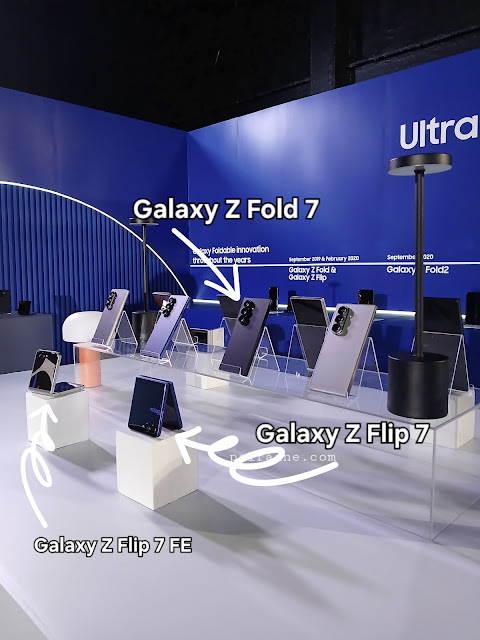When people hear the word sustainability, they often think of solar panels, electric tricycles, and bamboo straws. But here in Brgy. 76-A Bucana, sustainability is taking a quieter, more unexpected form — and it’s happening right on our screens.
Since the recent barangay elections, I’ve noticed something different. Our barangay captain, instead of relying solely on the usual posters, flyers, or even just word of mouth, has been personally posting updates and announcements on his own online platform. In a community where information sometimes gets lost in the shuffle of multiple group chats, barangay pages, and neighborhood grapevines, this direct line from leader to resident feels refreshing — and, in many ways, revolutionary.
A Digital Captain at the Helm
Bucana, officially known as Barangay 76-A, is recognized as the largest barangay in District 1, Davao City, both in terms of land area and population. Strategically located along the coastline, it serves as a vital residential and commercial hub that contributes significantly to the city’s growth. With its dense population and diverse communities, Bucana faces unique challenges in urban planning, social services, and infrastructure development, making it one of the most dynamic and closely monitored barangays in the city.
Bucana is a lively barangay. We have fishermen mending their nets by the shore, kids playing basketball in the afternoons, tricycles zipping by, and families gathering for evening conversations outside their homes. But like many communities, we also face challenges — from weather disruptions to public health concerns, to keeping everyone informed about projects and programs.
This is where our captain’s digital shift comes in. His posts aren’t flashy or filled with gimmicks — they’re clear, timely, and consistent. Whether it’s a schedule for clean-up drives, reminders about vaccination days, or updates on relief distribution, the message comes straight from him.
The power of this is twofold:
1. Clarity — No more “I heard it from someone who heard it from someone else.”
2. Accountability — When your leader is the one hitting post, you know the message is official.
The Noise of Too Many Channels
Before this shift, Brgy. 76-A Bucana already had plenty of Facebook groups and community chats. The problem? Too many sources can mean too much confusion. Announcements would sometimes be posted late, missed entirely, or drowned in the flood of other unrelated content — from marketplace listings to birthday greetings.
I remember once missing a barangay clean-up drive simply because the announcement was posted in a group chat I had muted months ago. Multiply that by hundreds of residents, and you see how easy it is for participation to drop, not because people don’t care, but because they simply don’t know.
Now, with the barangay captain leading his own digital channel, I find myself checking updates more often. It’s like having a community bulletin board right in my pocket — one I can trust to be accurate.
Digital Connection as Sustainability
You might be wondering — what does this have to do with sustainability?
Here in Bucana, one of our daily challenges is dealing with road closures caused by ongoing, unfinished construction. It’s not just an inconvenience—it affects how quickly people can get to work, bring kids to school, or even access emergency services. At the same time, our community continues to address social concerns like illegal drugs, which require consistent awareness and cooperation among residents.
Sustainability in our barangay doesn’t just mean caring for the environment—it’s also about building systems that keep us informed, connected, and engaged. Through digital communication, residents can receive timely updates on road works, traffic rerouting, and community programs. It’s faster, reduces paper waste, and allows more people to participate in important discussions without being physically present at the barangay hall.
By using technology to strengthen coordination, we can respond more efficiently to challenges—whether it’s navigating a blocked road or mobilizing support for anti-drug initiatives. This way, we work towards a community that’s not only cleaner and greener, but also safer, more informed, and united.
One Barangay at a Time
The beauty of the Digitally Forward vision is that it doesn’t require an overnight transformation. It’s about steady progress. One barangay at a time. One update at a time. One habit at a time.
Brgy. 76-A Bucana’s shift might look small from the outside — just a captain posting on Facebook or another platform — but in reality, it’s laying the foundation for bigger things:
1. More informed citizens — because everyone has equal access to updates.
2. Higher participation rates — because people are more aware of what’s happening.
3. Stronger trust — because the barangay leadership is visible and reachable.
I’ll be honest — I’m not particularly close to our barangay officials. I’m one of those residents who quietly goes about their day, pays attention to local matters from a distance, and only engages directly when necessary.
But lately, I’ve caught myself reacting to posts, commenting on updates, even sharing them. It’s a subtle reminder that leadership doesn’t always have to be about speeches, big projects, or ceremonial events. Sometimes, it’s about the simple act of showing up — digitally, yes, but consistently.
The fact that our captain is more active online tells me that he sees value in meeting the community where we are — and for many of us, that’s on our phones, during a break at work, after dinner, or while waiting for the rain to stop.
Of course, no system is perfect. Digital communication still faces hurdles:
* Not everyone in Bucana has stable internet access.
* Some residents may still prefer in-person announcements.
* Online platforms can be prone to misinformation if not managed carefully.
But these are challenges worth tackling. Imagine if every barangay in Davao City — or even across the country — had leaders using digital tools not just for political campaigns, but for everyday governance. The potential for collaboration, information-sharing, and rapid response is huge.
Brgy. 76-A Bucana’s digital shift is part of a larger trend: communities embracing technology to strengthen local governance. It’s about using tools we already have — smartphones, social media, instant messaging — and applying them with purpose.
In the future, I’d love to see this effort grow into:
* A central barangay app with announcements, event calendars, and emergency alerts.
* Digital feedback forms so residents can easily voice concerns or suggestions.
* Online archives of projects and initiatives for transparency.
These ideas may sound ambitious, but if there’s one thing I’ve learned from our captain’s posts, it’s that change doesn’t always start with big leaps. Sometimes, it starts with one post, one update, one decision to show up.
Moving Digitally Forward
Brgy. 76-A Bucana is still the same vibrant community I’ve always known. The sunsets over the shoreline are still breathtaking, the hum of tricycles still fills the air, and the laughter of children still spills into the streets. But there’s a quiet shift happening — a move towards being #DigitallyForward.
And while it might not make headlines, it’s making a difference in how we connect, respond, and work together.
If you ask me, sustainability starts with communication. And right now, our barangay is proving that one clear voice, one active platform, and one engaged leader can help build a stronger, more sustainable future — one barangay at a time.






































































